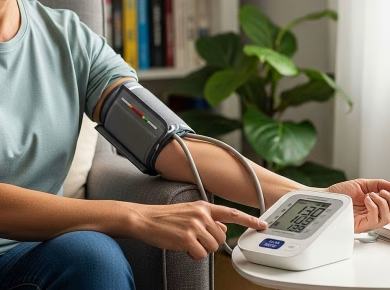Prescription sunglasses are a great way to protect your eyes from the sun’s harmful rays and look stylish and fashionable. But if you don’t get the correct pair, it can be uncomfortable and ineffective. To ensure the perfect fit, knowing your pupillary distance is essential. This article will discuss how to measure your pupillary distance and use it to get the right prescription sunglasses for you.
What Is Pupillary Distance?
The interpupillary distance (PD) is the space between a person’s pupils, measured from one centre to another. in millimetres (mm). It is an important factor when purchasing prescription eyewear, including glasses and sunglasses, as it helps determine where your lenses will be placed. The PD measurement also allows optometrists to customise lenses for each eye’s field of view. In addition, knowing your pupillary distance ensures your lenses are properly positioned so you can see clearly without distortion or discomfort.
How To Measure Pupillary Distance
There are two options for measuring pupillary distance – have your optometrist measure it for you or do it yourself. If you choose to have your optometrist measure your PD, they will use a special device called a pupillometer. This hand-held instrument measures the distance between the centres of both pupils.
If you prefer to measure your own PD, use a ruler and a mirror. Start standing arm’s length away from the mirror and look directly at yourself. Then, hold the ruler up to one side of your nose and line up the zero mark with the centre of one pupil. Finally, move the ruler over until it lines up with the centre of your other pupil, and record the measurement in millimetres.
Different Types of Prescription Sunglasses
Several types of prescription sunglasses are available on the market, including polarised, mirrored, transition lenses, and more. Polarised lenses help reduce glare from reflective surfaces such as water or snow, while mirrored lenses add a stylish look to any outfit.
Transition lenses automatically adjust to the amount of light entering your eyes depending on your environment – ideal for outdoor activities or driving. Some prescription sunglasses also come with UV protection, which helps protect your eyes from UVA and UVB rays.
Tips on Choosing The Right Prescription Sunglasses
When selecting prescription sunglasses, it’s important to consider the frame style that best suits your face shape and personal style. Choosing a quality pair of lenses for optimal vision is also essential. Look for lenses with anti-reflective coating, which helps reduce glare from headlights or sun rays. Select UV protection when possible, as it will help protect your eyes from further damage. Finally, don’t forget to consider your pupillary distance when ordering so you can ensure the exact positioning of the lenses in front of each eye.
Benefits of Wearing Prescription Sunglasses
Many benefits are associated with wearing prescription sunglasses, including improved vision and reduced eye strain. Sunglasses can help reduce the amount of glare from reflective surfaces like water or snow, making outdoor activities more enjoyable. Additionally, polarised lenses can improve visual clarity in bright light conditions, especially when driving or engaging in other outdoor activities.
In addition, UV protection helps protect your eyes from further damage caused by UVA and UVB rays. Finally, prescription sunglasses are a great way to look stylish while protecting your eyes simultaneously – perfect for any occasion!
Summary & Conclusion
Pupillary distance is important when buying prescription eyewear, including glasses and sunglasses. It helps determine where your lenses will be placed in front of each eye for optimal vision and comfort. Various types of prescription sunglasses are available, including polarised, mirrored, transition lenses, and more – select the frame style that best suits your face shape and personal style.
Additionally, look for quality lenses with anti-reflective coating and UV protection when possible. Finally, wearing prescription sunglasses can help reduce glare from reflective surfaces and protect your eyes from UVA and UVB rays. With all this in mind, it’s easy to see why pupillary distance is so important when selecting eyewear!
Read Next:
5 Health Benefits of Coffee: Separating Fact from Fiction








